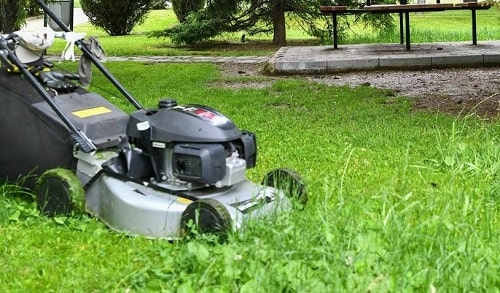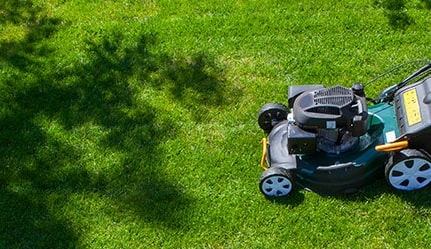How much does it cost to cut grass in Michigan?
The cost of cutting grass in Michigan, like in many other places, can vary significantly depending on various factors. These factors can include the size of the lawn, the frequency of service, the condition of the grass, and the specific services required. Additionally, local market conditions and the chosen lawn care provider can also influence the cost.
The most important substance in the maintenance of green areas is nitrogen. The most suitable fertilization times are early autumn (September), early winter (early November), early spring (March-April) and late spring (May). Fertilization should be done in the morning or afternoon when the soil temperature is the lowest. Here are some general guidelines for the cost of grass cutting in Michigan:
- Lawn Size: Larger lawns typically cost more to maintain than smaller ones. Lawn care providers often charge based on the square footage of the lawn.
- Frequency: The frequency of service can impact the cost. Some homeowners opt for weekly or bi-weekly lawn mowing, while others may choose a less frequent schedule. More frequent service may result in higher costs.
- Grass Condition: If the grass is overgrown, uneven, or requires additional services like edging, trimming, or leaf removal, the cost may be higher to account for the extra work.
- Location: The cost of lawn care services can vary by region within Michigan. Urban areas may have higher rates than rural areas due to differences in labor costs and demand.
- Lawn Care Provider: Different lawn care companies or individual contractors may offer different pricing structures. It’s a good idea to obtain multiple quotes and compare services before making a decision.
- Additional Services: Some lawn care providers offer additional services like fertilization, weed control, aeration, and pest control. These services can add to the overall cost.
- Seasonal Variations: The time of year can also affect pricing. Spring and summer tend to be the peak seasons for lawn care services, and prices may be higher during these times.

To get an accurate estimate for grass cutting services in your specific area of Michigan, it’s recommended to contact local lawn care providers or landscapers for quotes. They can assess your lawn’s unique needs and provide a more tailored estimate based on your requirements. Additionally, asking for recommendations from neighbors or friends who have used lawn care services in your area can help you find reliable providers at competitive prices. How much does it cost to cut grass in Lansing? >>
How many weeks do you cut grass in Michigan?
In Michigan, the grass-cutting season typically spans from late spring to early fall. The exact number of weeks during which you need to cut your grass will depend on various factors, including the specific climate and weather conditions in your region of Michigan, as well as your lawn’s individual characteristics. Here’s a general guideline for the grass-cutting season in Michigan:
- Late Spring: Grass cutting typically begins in late April to early May as temperatures start to rise, and grass begins to grow more vigorously. This is when you’ll likely need to start mowing your lawn regularly.
- Summer: Throughout the summer months, which can extend from June through August, grass growth is usually at its peak. Depending on factors like rainfall and temperature, you may need to mow your lawn every one to two weeks during this period.
- Early Fall: As the summer season transitions into early fall (September to early October), grass growth may slow down slightly. You may still need to mow the lawn, but the frequency may decrease compared to the peak summer months.
- Late Fall/Winter: Toward the end of the fall season and as temperatures drop in late October and November, grass growth typically slows considerably. You’ll likely mow less frequently during this time.
Keep in mind that the specific grass-cutting schedule can vary based on factors such as the type of grass in your lawn, local climate conditions, and how well you maintain your lawn (e.g., watering and fertilizing practices). Some homeowners may choose to continue mowing until late fall, while others may gradually reduce the frequency as temperatures drop.

Ultimately, the number of weeks you’ll need to cut grass in Michigan can vary from roughly 20 to 30 weeks or more, depending on the factors mentioned above. It’s a good idea to monitor your lawn’s growth and adjust your mowing schedule accordingly throughout the growing season to maintain a healthy and well-kept lawn.
Watering and fertilizing for Lansing lawn care
Proper watering and fertilizing are essential components of lawn care in Lansing, Michigan, as they help maintain a healthy and vibrant lawn. Lansing experiences a temperate climate with cold winters and warm summers, so understanding the specific needs of your lawn throughout the seasons is crucial. Here are some guidelines for watering and fertilizing your lawn in Lansing:
Watering:
- Watering Frequency: During the growing season (spring to early fall), aim to provide your lawn with about 1 to 1.5 inches of water per week. This can be achieved through rainfall and supplemental watering. It’s better to water deeply and infrequently rather than shallow and frequently. Deep watering encourages deep root growth, which makes the lawn more drought-resistant.
- Early Morning Watering: Water your lawn early in the morning, ideally between 6 AM and 10 AM. Morning watering allows the grass to dry quickly, reducing the risk of fungal diseases.
- Avoid Overwatering: Be cautious not to overwater, as this can lead to waterlogged soil and promote disease. You can monitor your lawn’s moisture needs by inserting a screwdriver or soil probe into the soil. If it goes in easily, the soil is adequately moist.
- Adjust for Weather: Adjust your watering schedule based on weather conditions. During hot, dry periods, you may need to water more frequently, while cooler, wet periods may require less watering.
Fertilizing:
- Soil Test: Start by conducting a soil test to determine the nutrient needs of your lawn. This will help you choose the right type and amount of fertilizer.
- Spring Fertilization: In Lansing, apply a balanced, slow-release fertilizer in the spring (usually April to early May) when the grass is actively growing. This provides essential nutrients for the growing season.
- Late Summer Fertilization: Apply a second round of fertilizer in late summer or early fall (around August to early September). This helps the grass recover from summer stress and encourages root development before winter.
- Choose the Right Fertilizer: Look for a fertilizer with a balanced N-P-K ratio (nitrogen, phosphorus, and potassium) suitable for your lawn type. Use a spreader to apply it evenly.
- Follow Application Rates: Always follow the recommended application rates on the fertilizer label to avoid overfertilizing, which can harm the lawn and the environment.
- Environmental Considerations: Be mindful of local regulations regarding fertilizer use, especially near water bodies, as excess fertilizer can contribute to water pollution.
- Mulching Grass Clippings: Leave grass clippings on the lawn when mowing. They can act as a natural fertilizer, returning nutrients to the soil.
By following these watering and fertilizing guidelines tailored to the Lansing area’s climate and soil conditions, you can promote a healthy, green lawn throughout the growing season while minimizing environmental impacts. Lansing lawn care service >>





